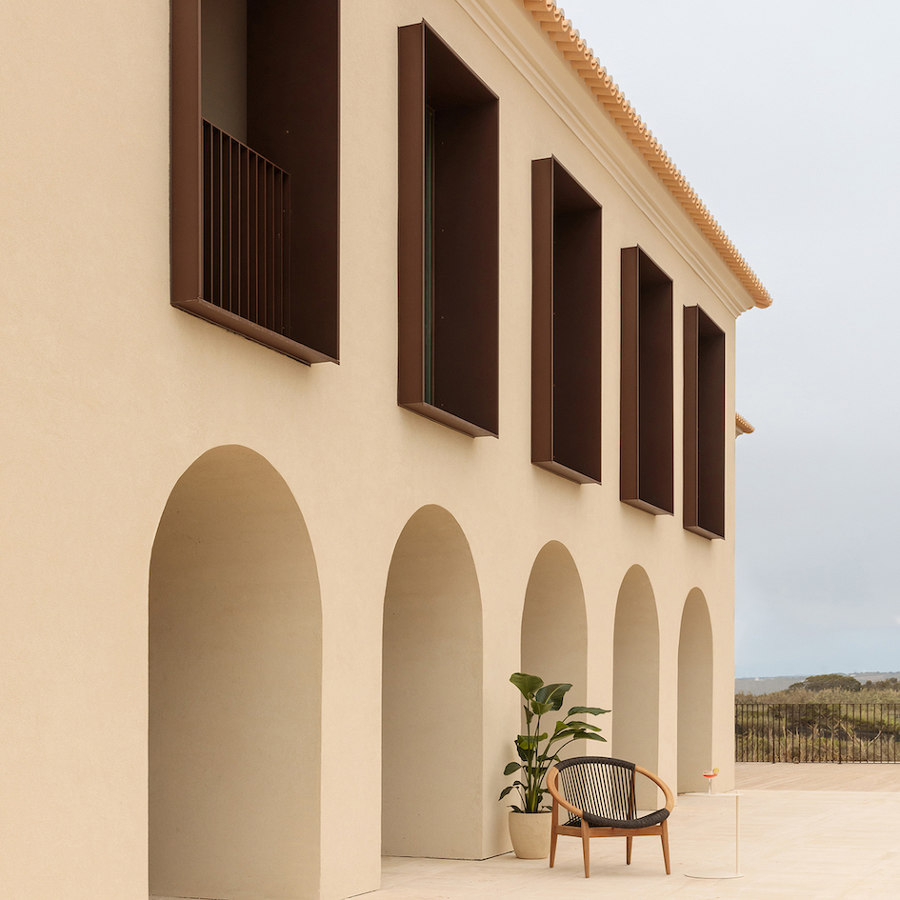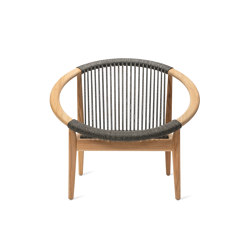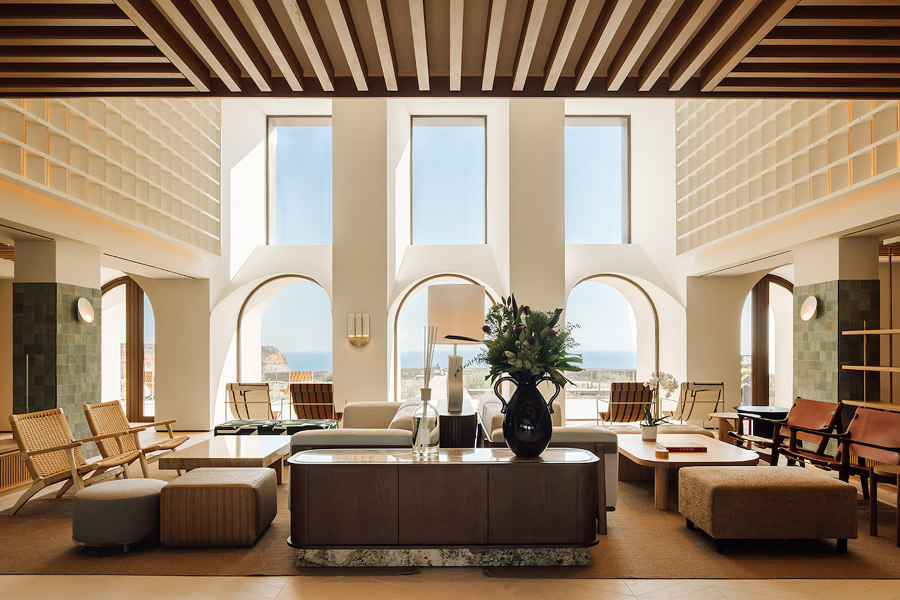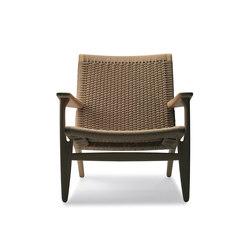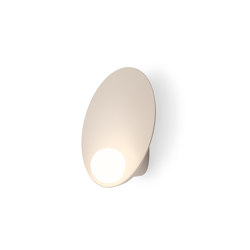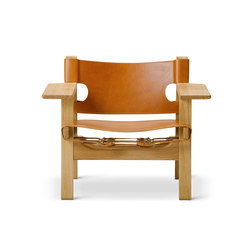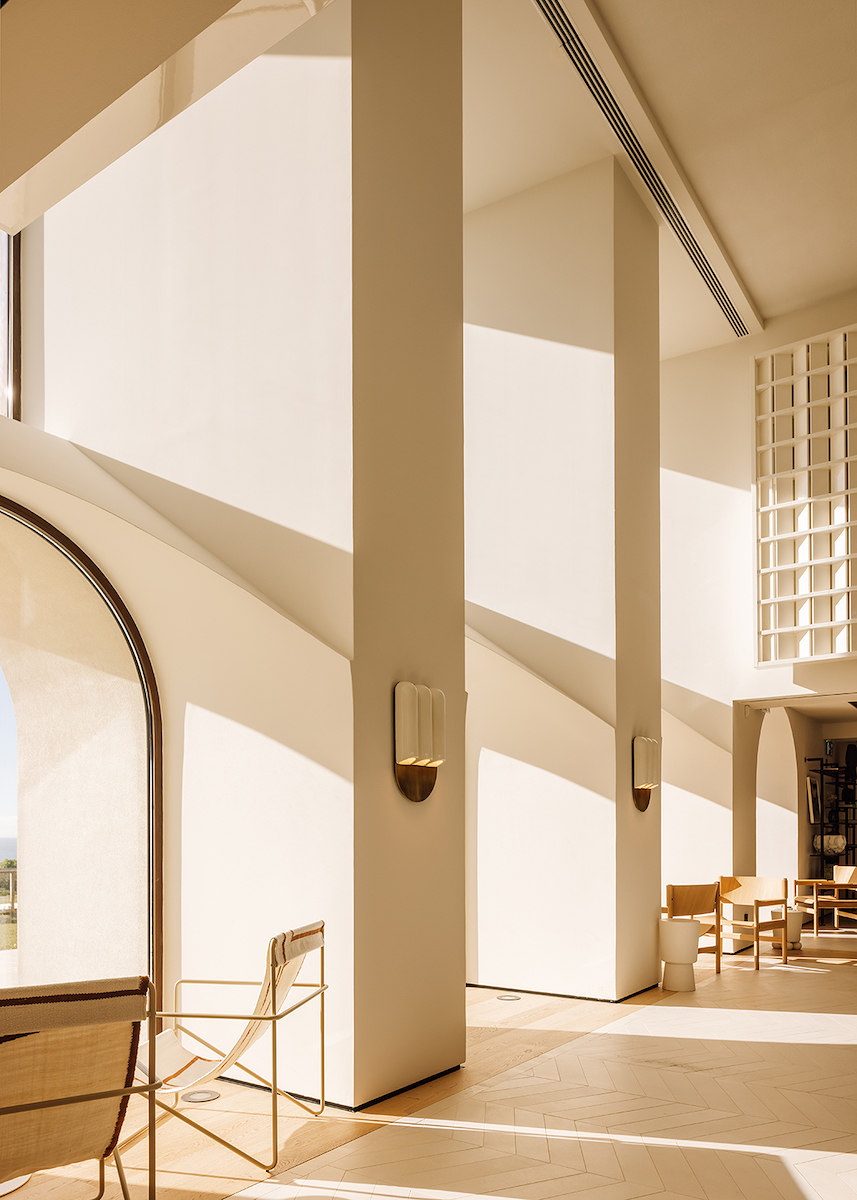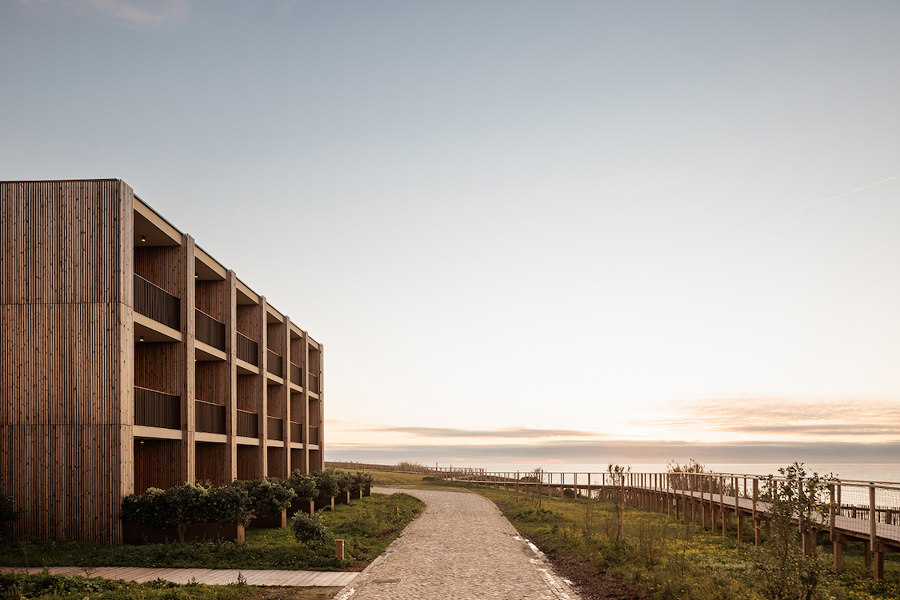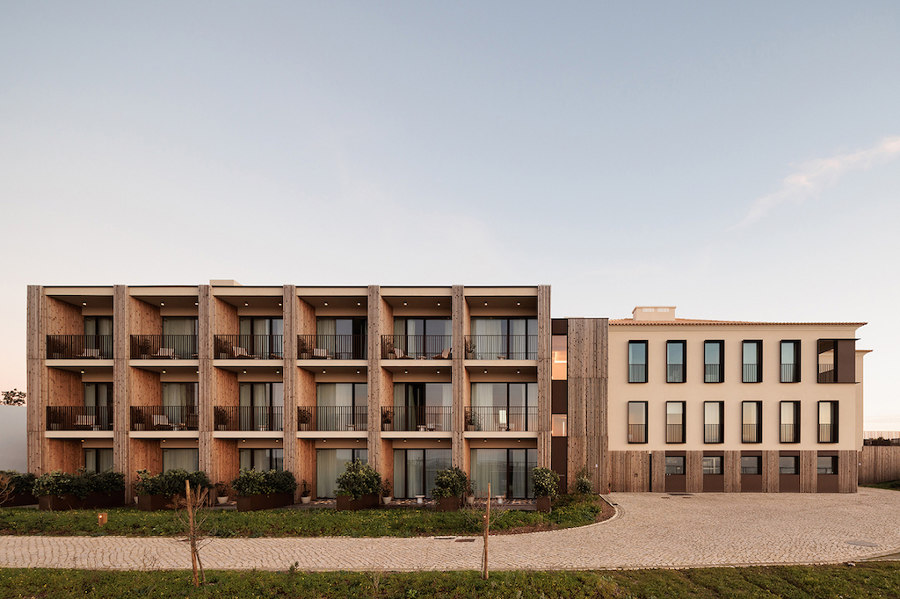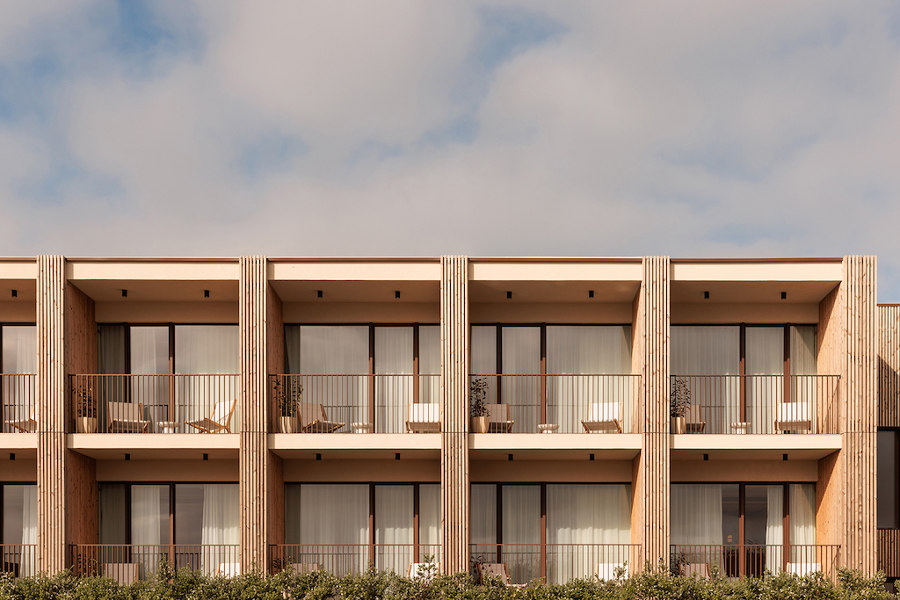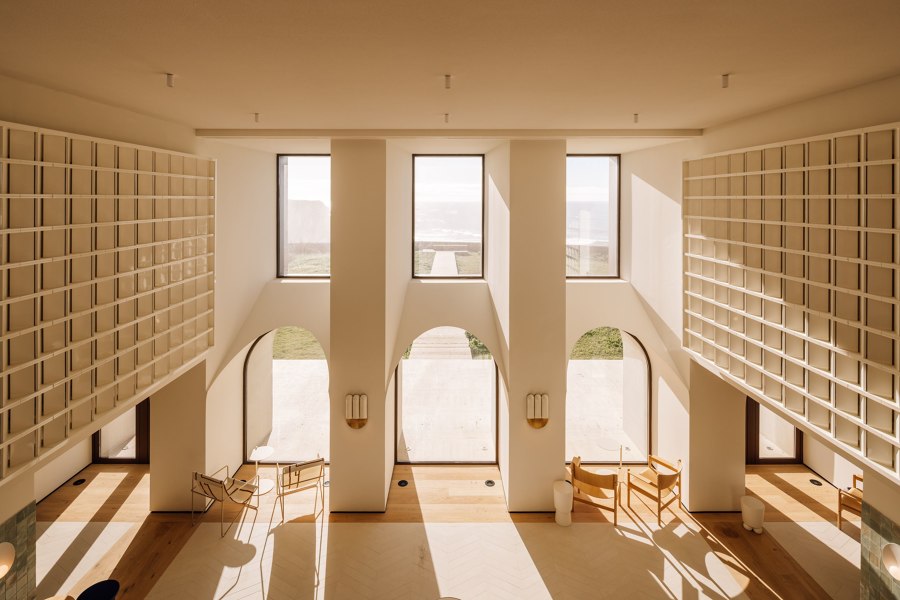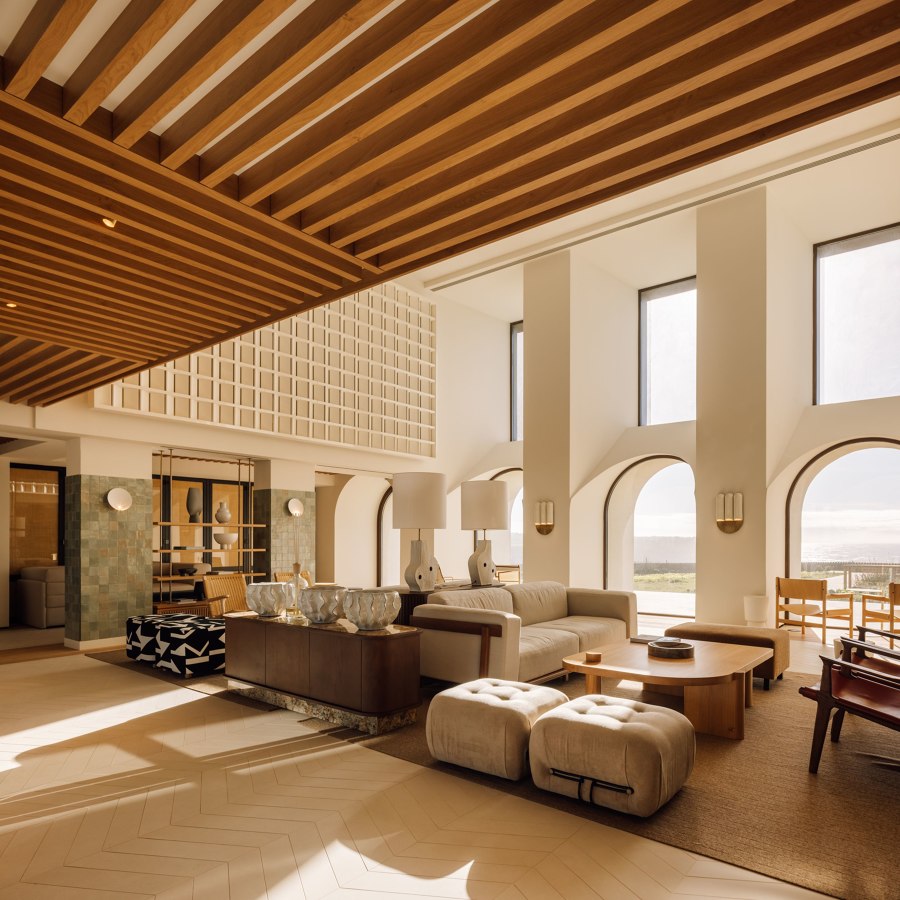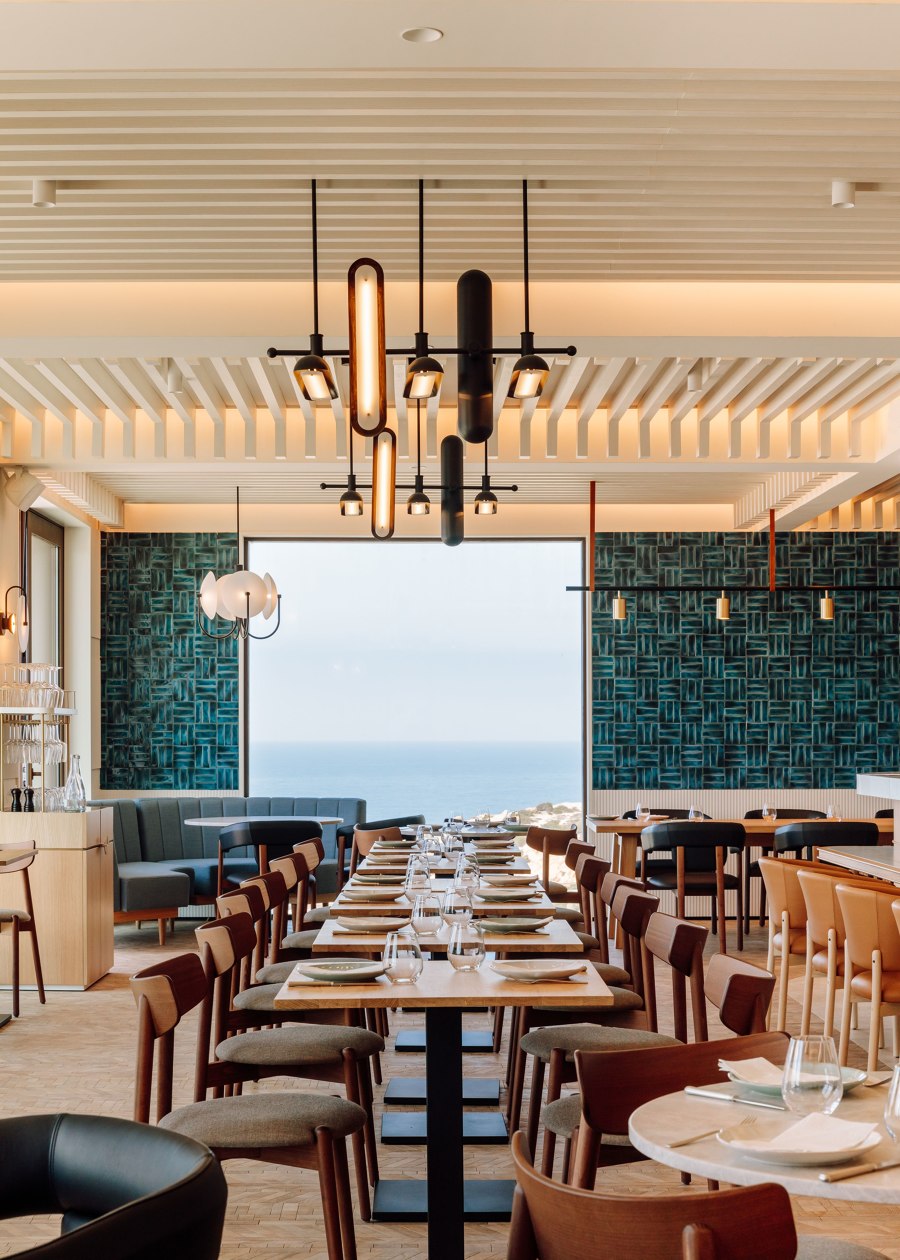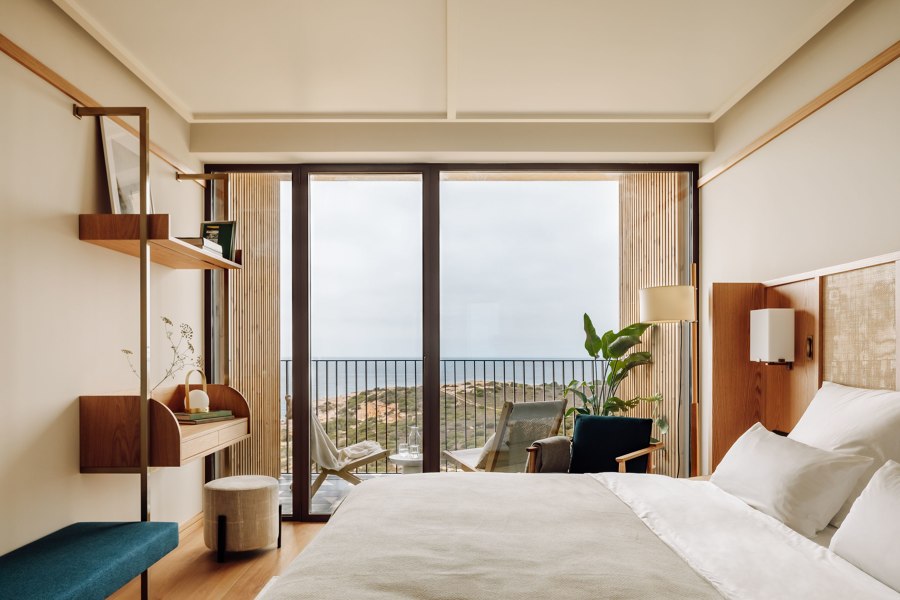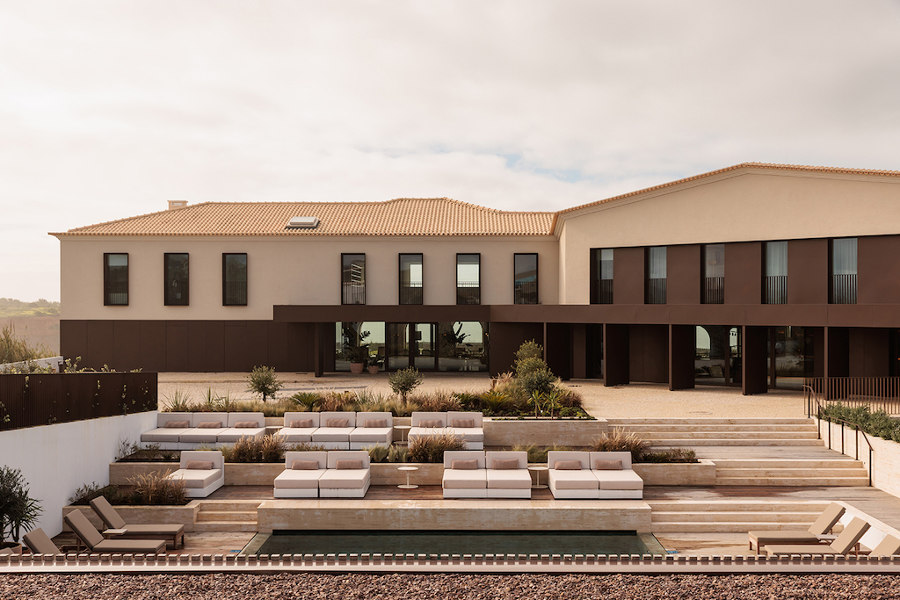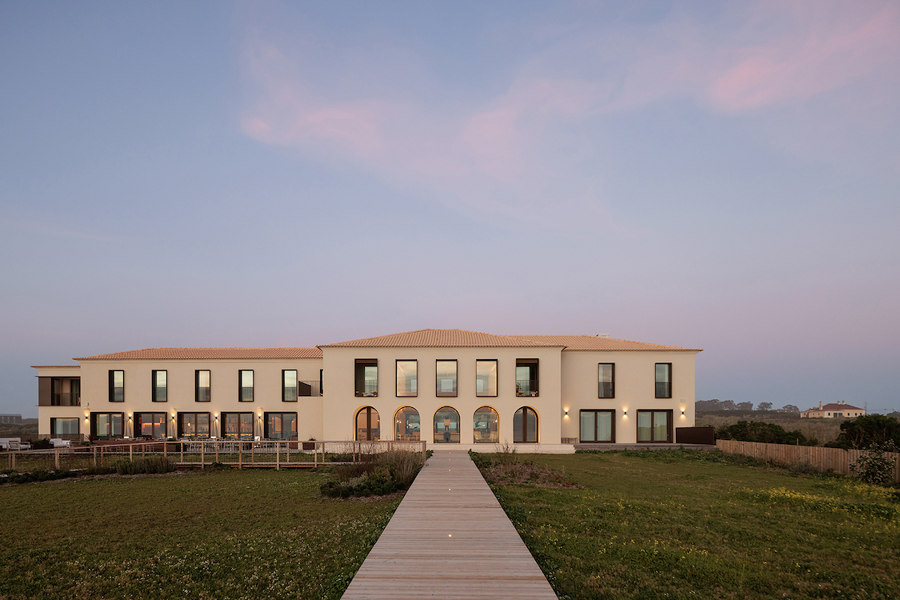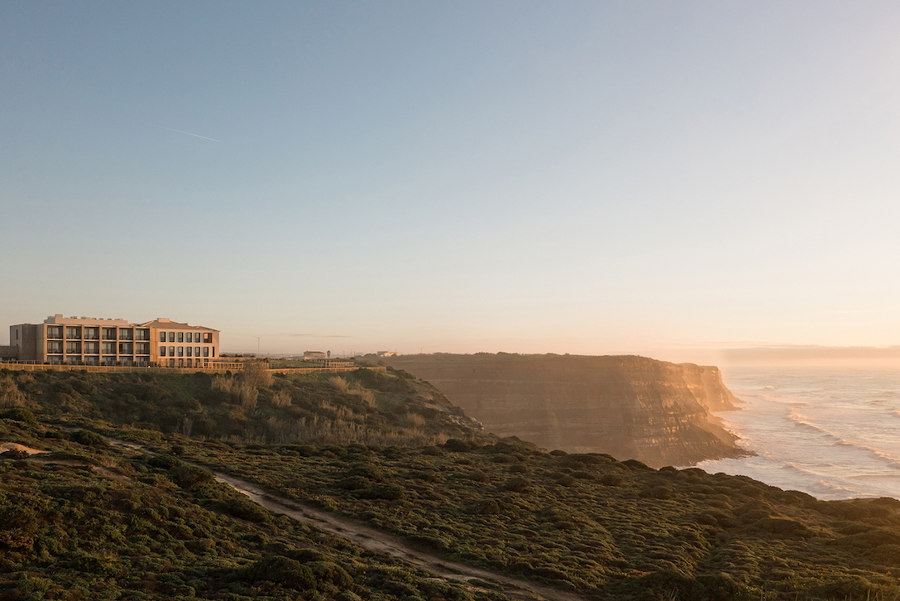Aethos Ericeira is a boutique hotel settled in Ericeira, Portugal, boasting breathtaking views over the Atlantic.
The project was a refurbishment intervention of an existing building located on a protected site and conditioned by numerous constraints. From our first site visit, we were stunned by the location and potential the site offered. Despite the many restrictions, our work aimed to respect the existing site and building and preserve part of its history.
The original building was somewhat lost in several subsequent extensions with conflicting architectural solutions and a confusing mix between traditional and modern elements. During the development of this project, our starting point was to strip down the buildings to their essence and separate the elements we wanted to keep and the ones we wanted to let go.
In this deep refurbishment intervention, there were a few key design iterations that completely shifted the direction of the project, and we were fortunate that our clients shared the same vision, even in situations that meant a loss of buildable area.
One of those key iterations was the change of the main entrance, from the center of the building to the sea-facing front, where we created a double-height area connecting the seascape and greeting users with a unique arrival experience. During the design process, we understood the importance of creating something distinguishable, emphasizing the character of the space. Although the existing building had arches, these had no significant expression and were deformed in scale. We gave them proportion, texture, depth, and mass, to emphasize the presence of the walls and protect the room from direct sunlight during the warmer months. The windows were stripped down, adding a restored sense of proportion. The result is a space with well-defined architectural boundaries, and simultaneously delicate, that plays with shadows and light.
A second key iteration was the nearly complete demolition of an existing basement on the edge of the pool area, containing an underground multipurpose room. Although this meant a significant reduction of the built area, it allowed for a wider connection between the pool, which previously had been surrounded by high walls on all sides, and the hotel building, paving the way for redesigning the pool’s surroundings into a seamlessly inviting series of interconnected levels.
During the design process, various other iterations helped shape the project we have today, such as larger windows, which were a response to the brief requirements and site conditions, to allow light in and take advantage of the incredible views, rather than opting for the traditionally smaller facade openings, especially in the social areas. In keeping with our goal of clear distinction between old and new, we gave these windows their own visual identity and materiality, designing them as metallic boxes protruding from the facades, which went on to become one of the building's defining features.
The revised layout defines a new organization of the seafront buildings, with an open plan style ambiance the briefing called for. The main entrance, at ground level, with a double-height space, includes the lounge area and reception. Adjacent to this space, lies the multipurpose and supporting services rooms, and on the opposite side lie the restaurant, bar area, and connection to a second building, as well as back-of-house areas. The main rooms, such as the multipurpose, main entrance, and restaurant have a direct connection to the exterior, taking advantage of its prime location with wide outdoor areas and large new windows that frame the spellbinding seascape.
The first level includes mostly bedrooms, some of which follow the same layout as the existing building, however with improvements that meet current legislation. The main alterations relate to the creation of the Mezzanine area where one can relax and enjoy the beautiful views. The basement of this building houses all the service spaces, such as storage, staff areas, and kitchen with dedicated service and delivery accesses.
The extension building, where most of the bedrooms are located, maintains the same layout on the ground and first levels, albeit slightly altered to meet current standards and the level of service intended, as well as new connections to the exterior spaces. At the edge of the extension building, occupying part of the old footprint of the basement, a new small building is created to give room to a Spa, which is also connected to the pool area and gym building.
We believe it is important to highlight the deep intervention undertaken in the external areas, allowing us to maximize the use of spaces, as well as create flows that work not only from a design perspective but also from a functional one.
In terms of shape, color, and materiality, the challenge was to achieve a look and feel that was well integrated with both the existing building and the striking landscape. We achieved this by removing a few sloped roofs and opening the balconies, applying vertical wood slats and metallic panels covering the facades, therefore reinterpreting them into clearer shapes and volumes. Color and texture play into this concept by helping us highlight these two types of intervention: the traditional one with light-colored walls paired with darker framed fenestrations, and the modern one, with the texture and warmth of the timber combined with the darker frames. The use of these contrasting but complementing materials played a big role in the design development of the concept and integration of the landscape and with the interiors.
Design Team:
Landscape Architecture: Topiaris
Interior Design and FF&E: Astet
